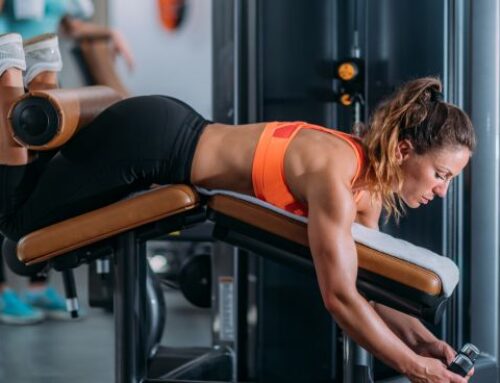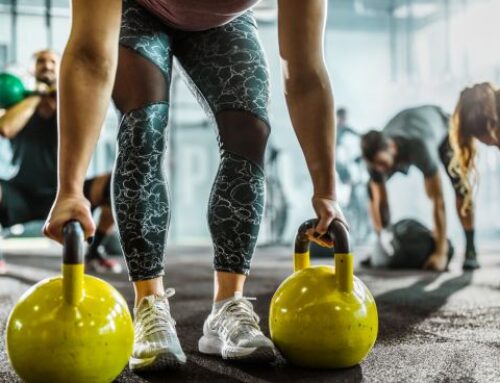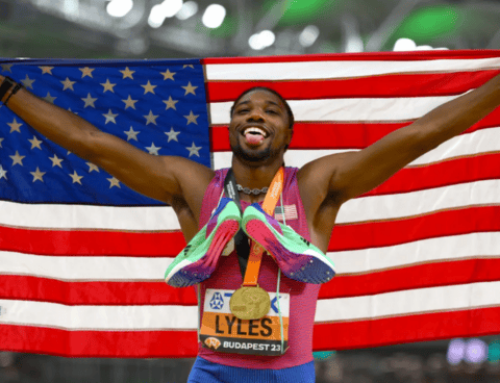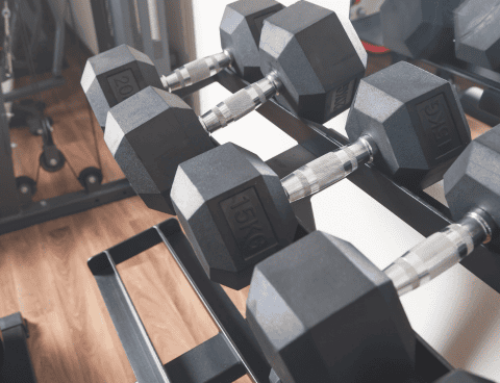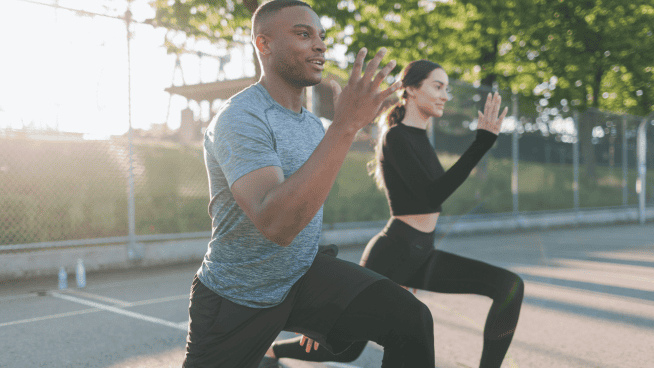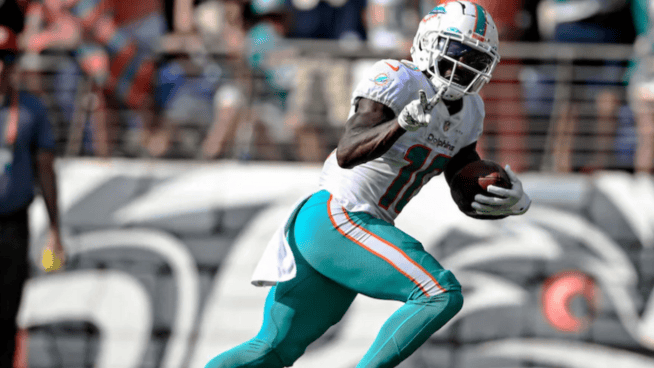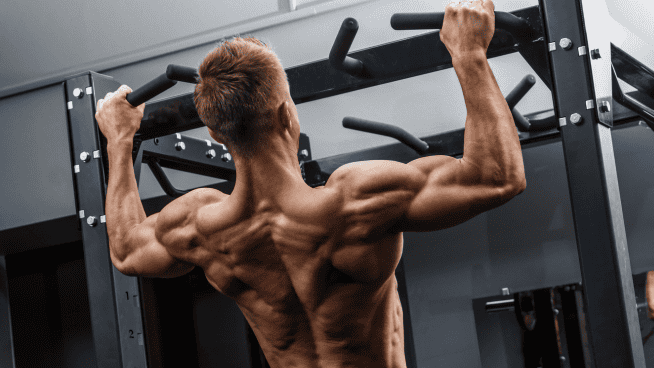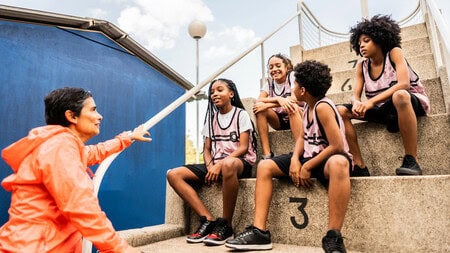Could the Landmine Be a Secret Weapon for Female Athletes?
For the most part, male and female athletes should train the same way. A boys’ basketball strength and conditioning program should look very similar to a girls’ basketball strength and conditioning program. However, it must be acknowledged that girls and boys have differences that should influence how they train. There are anatomy and physiological differences between boys and girls that largely contribute to injury rates in sports.
Female hips tend to be wider, which contributes to increased stress at the knee. Wider hips are largely why female athletes have a 3.5 times higher ACL injury rate than boys. Unfortunately, the wider pelvis and hips put increased stress on the knee. For example, boys tend to be stronger in the upper body, and females tend to be stronger pound for pound in the legs, particularly the quads. Because of this anatomy, females tend to have strong quads in the front of the thigh but disproportionately weaker hamstrings on the backside of the thigh. This disproportional strength contributes to increased knee stress.
Strong Glutes, Fewer Surgeries
A huge part of the solution to reduce injury rates for females is to increase their hip and hamstring strength. In my physical therapy clinic, I notice without fail that all my female athlete patients with a knee injury have weak glutes and hamstrings. Weakness in these areas can be a huge predictor of injury or even pain in the knee. Strengthening these particular areas will help bring balance to the knee, decreasing its vulnerability to injury.
Strong Glutes, Better Performance
Strengthening the hips and hammies isn’t just about injury prevention, though. A strong backside leads to greater overall performance for athletes as well. The glutes are the biggest and strongest muscles in the body. The hamstrings are also some of the biggest and strongest in the body. Together, the glutes and hamstrings work to make an athlete more explosive and agile. Strengthening these areas leads to faster running, higher jumping, faster throws, and swings. Strong glutes and hamstrings will help any athlete improve their performance and reduce the likelihood of injury. Improving strength in these areas makes a lot of sense for all athletes, especially female athletes.
The Landmine
You may have never heard of a landmine. Your local gym and your school may not have one either. Unfortunately, they aren’t very popular, but they should be. They are affordable, very small and mobile, and incredibly versatile. The landmine is a popular tool for squats, reverse lunges, and RDLs. These three exercises are very powerful glute and hamstring builders.
But these exercises can be done with other pieces of equipment or even no equipment at all. What makes a landmine unique, however, is the arcing motion it creates. Pretty much all variations of squats are vertical in nature. The landmine, however, creates a more horizontal resistance. This horizontal resistance forces the athlete to use their glutes and hamstrings more than the quad muscles in the front.
A 2021 study from North Dakota State University confirmed this. They took 16 male athletes and 16 female athletes. They had them perform a traditional vertical squat and compared that to landmine squats. They found that both the men and women had increased glute and hamstring activity in the landmine squat compared to more traditional squats.
Given the usual strength ratio differences between boys and girls, this study supported the idea that landmine squats are better suited for female athletes. Boys tend to be relatively weaker in the quadricep area, so more traditional squats may be more appropriate for them. For the female athlete, landmine squats are particularly beneficial for their weaker areas, the glutes and hamstrings.
The landmine squat is superior for glutes and hamstrings. We can confidently say the other common landmine exercises are an excellent option for all athletes. Those other exercises are deadlifting and lunging. Again, the horizontal action demands greater hip and hamstring activity, which female athletes particularly need.
Here is a great video on how to perform a landmine squat.
Additionally, here is a detailed yet fantastic video showing how to properly squat, deadlift, and lunge with the landmine.
A landmine is a fantastic tool for any athlete to use. In particular, it can be beneficial for female athletes for both performance and injury prevention. The landmine is on my very short list of absolute must-haves for athletes to have in their gym. If your gym does not have one, I will encourage you to ask your coach or athletic director if they could look into getting one, or maybe get one for yourself. Again, they are compact and portable, and while they aren’t super cheap, they are affordable and well worth it.
Is the landmine THE secret weapon for female athletes? Maybe. It won’t turn you from JV into a D-1 prospect. However, the landmine is a training secret that will make you a better and more injury resilient athlete when performed correctly.
https://link.springer.com/article/10.1007/s12178-013-9158-y
RECOMMENDED FOR YOU
MOST POPULAR
Could the Landmine Be a Secret Weapon for Female Athletes?
For the most part, male and female athletes should train the same way. A boys’ basketball strength and conditioning program should look very similar to a girls’ basketball strength and conditioning program. However, it must be acknowledged that girls and boys have differences that should influence how they train. There are anatomy and physiological differences between boys and girls that largely contribute to injury rates in sports.
Female hips tend to be wider, which contributes to increased stress at the knee. Wider hips are largely why female athletes have a 3.5 times higher ACL injury rate than boys. Unfortunately, the wider pelvis and hips put increased stress on the knee. For example, boys tend to be stronger in the upper body, and females tend to be stronger pound for pound in the legs, particularly the quads. Because of this anatomy, females tend to have strong quads in the front of the thigh but disproportionately weaker hamstrings on the backside of the thigh. This disproportional strength contributes to increased knee stress.
Strong Glutes, Fewer Surgeries
A huge part of the solution to reduce injury rates for females is to increase their hip and hamstring strength. In my physical therapy clinic, I notice without fail that all my female athlete patients with a knee injury have weak glutes and hamstrings. Weakness in these areas can be a huge predictor of injury or even pain in the knee. Strengthening these particular areas will help bring balance to the knee, decreasing its vulnerability to injury.
Strong Glutes, Better Performance
Strengthening the hips and hammies isn’t just about injury prevention, though. A strong backside leads to greater overall performance for athletes as well. The glutes are the biggest and strongest muscles in the body. The hamstrings are also some of the biggest and strongest in the body. Together, the glutes and hamstrings work to make an athlete more explosive and agile. Strengthening these areas leads to faster running, higher jumping, faster throws, and swings. Strong glutes and hamstrings will help any athlete improve their performance and reduce the likelihood of injury. Improving strength in these areas makes a lot of sense for all athletes, especially female athletes.
The Landmine
You may have never heard of a landmine. Your local gym and your school may not have one either. Unfortunately, they aren’t very popular, but they should be. They are affordable, very small and mobile, and incredibly versatile. The landmine is a popular tool for squats, reverse lunges, and RDLs. These three exercises are very powerful glute and hamstring builders.
But these exercises can be done with other pieces of equipment or even no equipment at all. What makes a landmine unique, however, is the arcing motion it creates. Pretty much all variations of squats are vertical in nature. The landmine, however, creates a more horizontal resistance. This horizontal resistance forces the athlete to use their glutes and hamstrings more than the quad muscles in the front.
A 2021 study from North Dakota State University confirmed this. They took 16 male athletes and 16 female athletes. They had them perform a traditional vertical squat and compared that to landmine squats. They found that both the men and women had increased glute and hamstring activity in the landmine squat compared to more traditional squats.
Given the usual strength ratio differences between boys and girls, this study supported the idea that landmine squats are better suited for female athletes. Boys tend to be relatively weaker in the quadricep area, so more traditional squats may be more appropriate for them. For the female athlete, landmine squats are particularly beneficial for their weaker areas, the glutes and hamstrings.
The landmine squat is superior for glutes and hamstrings. We can confidently say the other common landmine exercises are an excellent option for all athletes. Those other exercises are deadlifting and lunging. Again, the horizontal action demands greater hip and hamstring activity, which female athletes particularly need.
Here is a great video on how to perform a landmine squat.
Additionally, here is a detailed yet fantastic video showing how to properly squat, deadlift, and lunge with the landmine.
A landmine is a fantastic tool for any athlete to use. In particular, it can be beneficial for female athletes for both performance and injury prevention. The landmine is on my very short list of absolute must-haves for athletes to have in their gym. If your gym does not have one, I will encourage you to ask your coach or athletic director if they could look into getting one, or maybe get one for yourself. Again, they are compact and portable, and while they aren’t super cheap, they are affordable and well worth it.
Is the landmine THE secret weapon for female athletes? Maybe. It won’t turn you from JV into a D-1 prospect. However, the landmine is a training secret that will make you a better and more injury resilient athlete when performed correctly.

